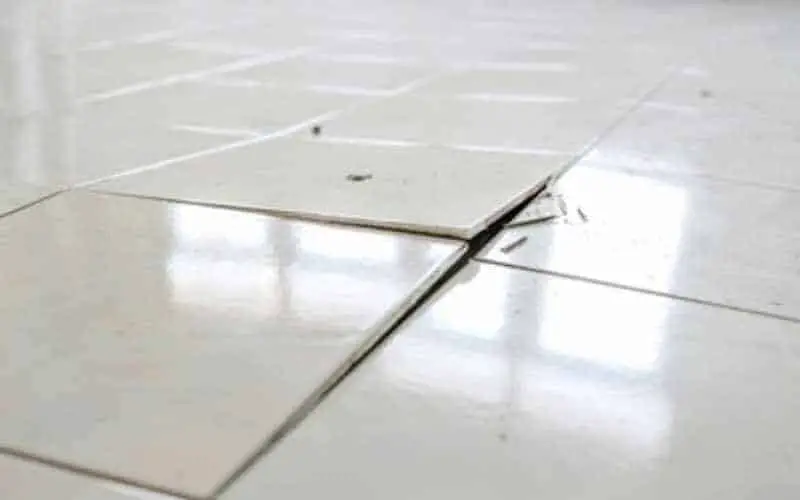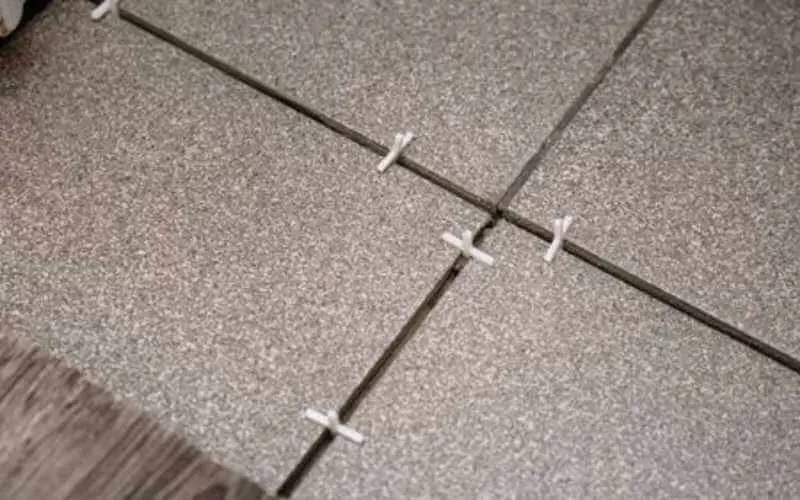Vinyl and ceramic tiles are simple to clean and maintain, making them popular for flooring basements, bathrooms, and kitchens. Tiles, on the other hand, require precise installation and occasional upkeep to keep them looking new.
Sometimes you’re faced with bulging or sagging tiles and might be confused about how to fix them. Bulging tiles usually occur for a myriad of reasons. That said, we’ve got you covered on how to fix bulging floor tiles.
Sometimes it happens when the subfloor is unleveled or rotting. In such a situation, to fix the bulging tiles, you will have to replace the rotting or unleveled subfloor with staple materials.
Read on as we explore various ways to fix a bulging tile floor.
How to Fix Bulging Floor Tiles
Table of Contents
The unfortunate thing about bulging floor tiles is that they tend to spread all over the house just like cancer. The best advice when dealing with bulging floor tiles is to replace the entire floor in the area.
Before repairing a loose tile, you must address the underlying issue. Rotting or moldy drywall and subfloors must be replaced with more stable materials.
Reinstall the tile after the floor or drywall has been cleaned and dried, then grout according to the manufacturer’s instructions.
Fixing loose vinyl tiles is a little easier. Simply place a sheet of aluminum foil over the loose or bulging region and iron it. The iron melts the glue to reactivate it. Place a stack of books on top of the tile for many hours to keep it in place.
If you feel the problem is caused by soil difficulties, hire a professional to construct a floating subfloor. Because vinyl tile is flexible and usually does not require a floating floor, it is often a better alternative on expansive soils than ceramic tile.
Why are Floor Tiles Bulging?
Below are some of the causes of bulging floor tiles
1. Water Leaking Through Cracked Grout
Water leaking behind the tiles due to cracked or untreated grout is the most typical cause of loose or bulging tile. This causes drywall to deteriorate and expand.
2. Poor Craftsmanship
Sometimes bulging floor tiles can be traced to your contractor. If the tile setter did not use enough thin-set or tile glue, the tiles might become loose.
A shaky or damaged flooring may also cause tiles to loosen and bulge. If the floor becomes particularly moist, the vinyl tiles may bulge or become loose, enabling water to seep underneath and soften the glue.
Read: How to stop water from coming through concrete floors
3. Poor Screeding
This can also be traced to poor craftsmanship. If the flooring preparation (screeding) is poor and harsh or may be carried out with low-quality materials, the chances are that you will have bulging floor tiles.
4. Dirty Subfloor
Before placing the tiles, the professional installers understand that the floor must be clean. However, if the installers are in a hurry (maybe because they are paid by volume rather than hourly), they may overlook some hygiene.
5. Usage of Low-Quality Adhesive or Incorrect Mortar Mixtures
Tiles are installed using mortars (a mixture of cement and sands). Bulging of floor tiles is more likely when the sand is of poor quality (i.e, contains a lot of mud).
6. The Tile Was Not Fully “Blowed” With a Rubber Hammer
There is a possibility that the tiles are unevenly pressured. If such is the case, it can cause air bubbles, which will loosen the bonding when the mortars are dry.
Find Out: Does ceramic tile need to be sealed?
7. The Space Between the Tiles is too Narrow.
This is a typical problem for homeowners who want their ceramic tile to look like marble. On marbles, the gap appears to be very small and hidden.
As a result, they intend to do the same with ceramics. Doing the same with ceramic tiles will lead to bulging floor tiles.
8. Weather Conditions are Unfavorable
If the section of the floor is immediately exposed to sunshine, there is a potential that the tiles will pop up since direct sunlight causes heat, which causes the tiles to expand. As a result, if the adhesives are not strong enough, the tiles may pop up and buckle.
A high moisture area is another major cause of tiles bursting because the tiles have the potential to bulge and spring up.
Read: How to apply tile adhesive
Conclusion
Bulging floors tiles sometimes happen when the soils beneath the tiles compress and expand. So, repairing the grout and adhesives on the tiles in most cases will be inadequate in fixing the problem.
In this post on how to fix bulging floor tiles, you know that sometimes the solution to your bulging tiles is just to call in the services of a professional.

